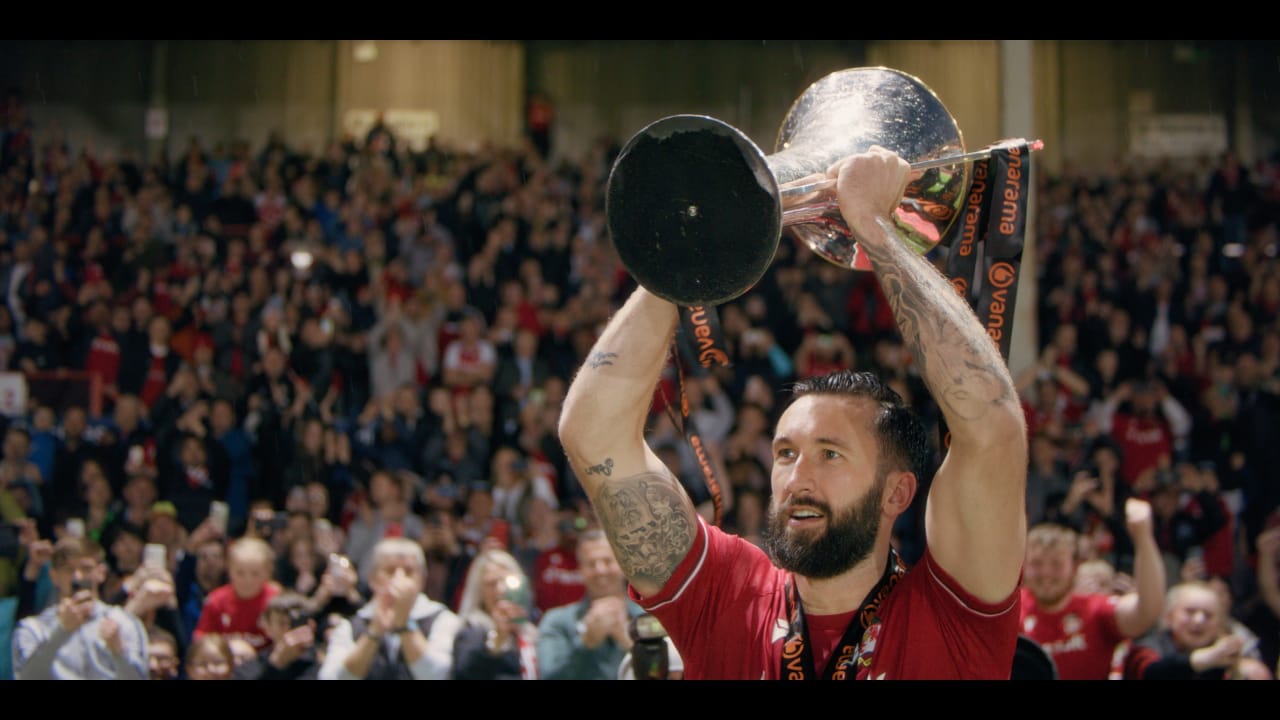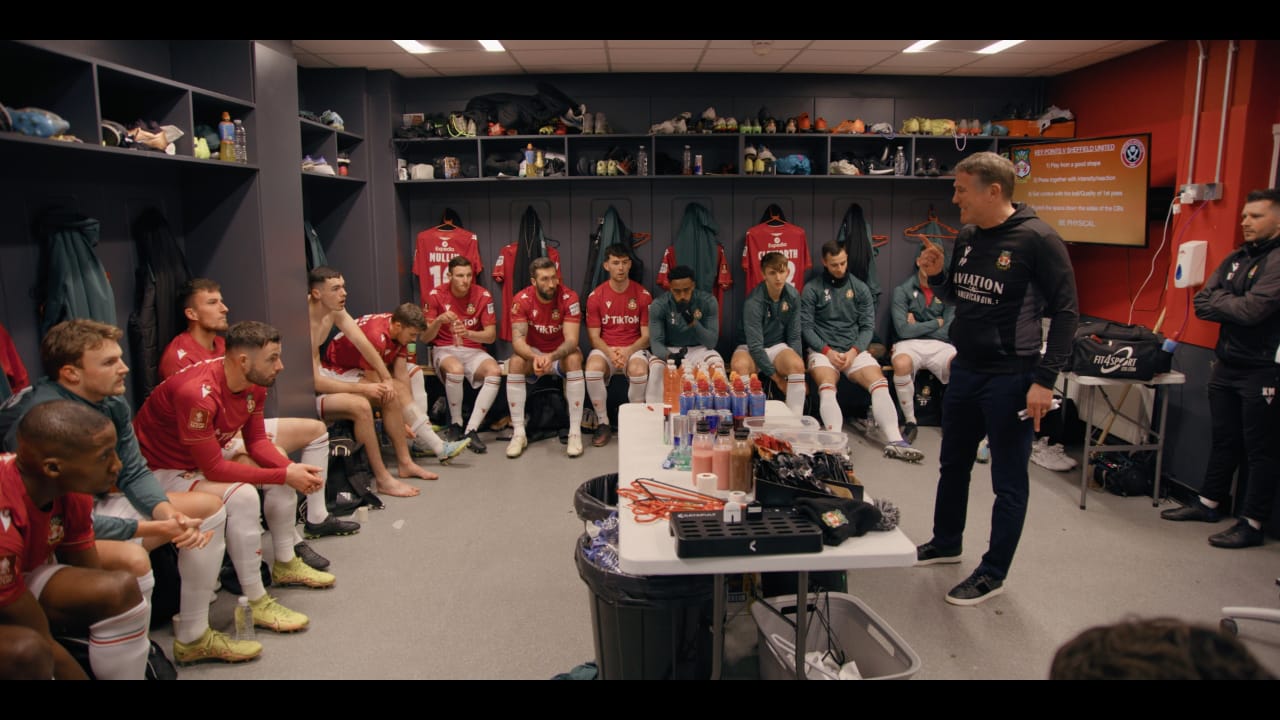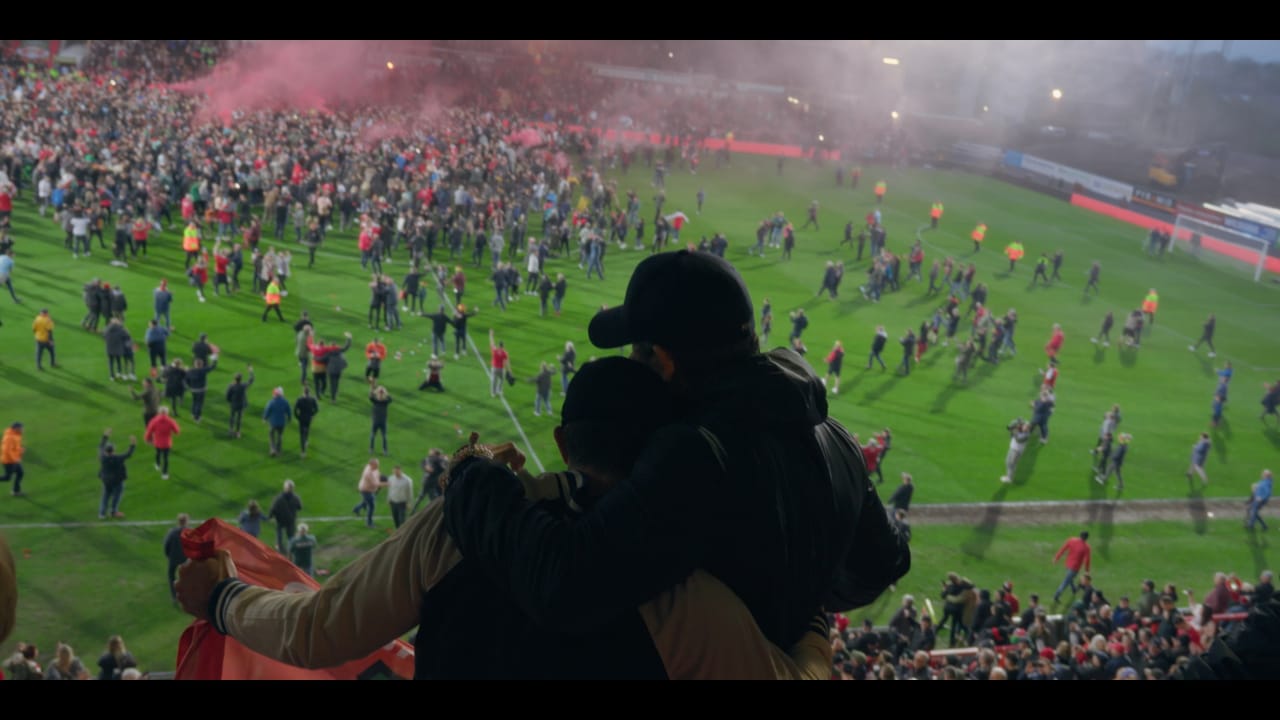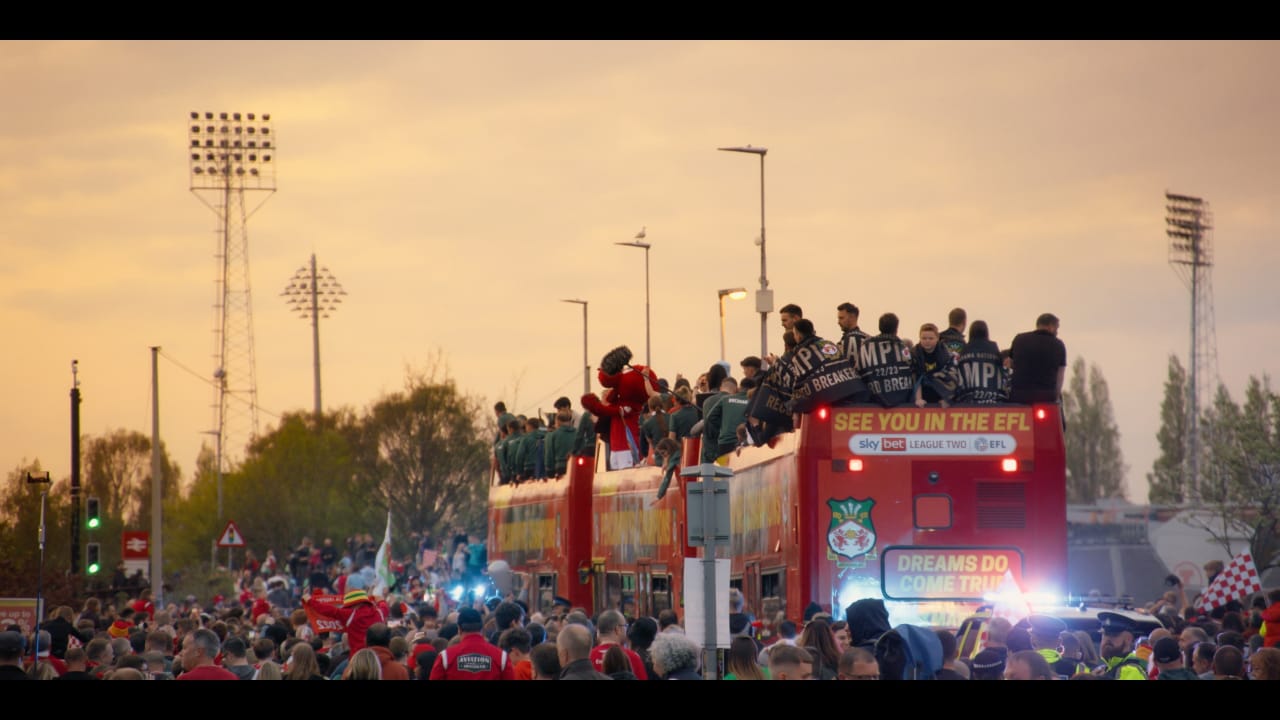
FX's docuseries hit uses Blackmagic RAW and DaVinci Resolve Studio for its ground-breaking workflow, achieving rapid turnarounds while maintaining the sort of quality that wins awards, and big ones at that.
In Welcome to Wrexham, actors Rob McElhenney and Ryan Reynolds embark on running Wrexham AFC, one of the oldest professional soccer clubs in the world. The resulting docuseries follows their journey from Hollywood to Wales, capturing their experiences in soccer club ownership and the club's connection with the town.
The series, praised for its storytelling, won five Creative Arts Emmys this year for best unstructured reality program, cinematography, picture editing, directing and sound mixing. Following Wrexham’s pursuit of promotion, series two follows the 2022/23 season.
Having served across the entire series, Assistant Camera Operator (AC) Gareth Roberts notes an evolution both on and off the field. “Season two wasn't just about continuing the club's revitalization; it is also a progression in the visual narrative,” explains Roberts.
He adds, “Discussions about enhancing the show's aesthetics began with DP Craig Robert Hastings, Showrunners Bryan Rowland and Josh Drisko, and Producer Patrick McGarvey ahead of filming season two. We sought to embrace a more authentic visual approach, stepping away from the more overly lit style of season one.”
Handheld shooting

Small, compact kit is essential for fly-on-the-wall shooting
Their aim was to give the series a more cinematic appearance, magnifying the drama of a small football club’s journey to reach the upper leagues.
“While we had multiple cameras available for match coverage, most of our filming necessitated the use of a single handheld camera,” explains DP Craig Robert Hastings. “We needed something compact and lightweight with good low light sensitivity and variable speed options.”
Both seasons were acquired in 4K using Blackmagic RAW, with production opting to lens the series on Blackmagic URSA Mini Pro 12K digital film cameras and shot for a 17:9 aspect ratio. The primary camera on a matchday used an Angenieux 30-90mm PL zoom lens and was typically operated shoulder mounted or underslung. The operator relied on 512GB Angelbird C-Fast 2 cards, which typically allowed for approximately 105 minutes of 4K recording at 23.98fps.
“The combination of the cameras and the Zeiss Super Speed primes are crucial, especially when shooting in low light conditions or working with practical lighting. This choice allowed us to move beyond the typical vérité style and inject an added level of intimacy into scenes,” says Hastings.

Floodlit shots presented challenges, even before a pitch invasion
One of the challenges faced in season one was a flickering caused by the stadium lights operating at an unusual frequency. “In season two, we shot at a base shutter angle of 172.8 degrees to combat this,” explains Roberts.
The lighting approach in season two aimed to create more realistic and natural setups, either by constructing light from scratch or enhancing existing natural light. "We used a basic lighting kit consisting of LEDs to achieve this, with different DPs throughout the season adding their own touch to the show's lighting aesthetics," says Roberts.
“The URSA 12Ks allow us to switch between higher framerates easily and include audio capture in those high framerates, which many other cameras don't offer. Likewise, being able to shoot 4K RAW at 100fps was a huge positive for us, as it improves the drama of matchday. However, the Blackmagic RAW workflow was the biggest asset as it afforded our post team more control during the edit and grade,” says Maximum Effort’s Bryan Rowland, who wears many hats on the series as director, editor and showrunner.
Production logistics
On game days, the production team splits in two. The first crew films actuality, the pregame anticipation, the team's arrival and the energy around the stadium. “Should an episode follow an individual’s story, we are there first thing and document the journey in to and during a matchday,” Rowland notes. A second crew focuses on the match action, capturing the players’ and the crowd’s chorus of emotions.
The production team also employs a Blackmagic Pocket Cinema Camera 6K to cover the locker rooms and individual stories or interviews.
A typical filming day on season one would result in 3TBs of data, with some games peaking at between 12 and 15TBs, states Rowland. “Reducing the number of cameras used and increasing the Blackmagic RAW compression from 8:1 to 12:1 for more manageable file sizes helped,” he notes. “A typical match day now averages no more than 6TBs and shoot days around 2TBs.”
DIT Marcin Orlowski is responsible for wrangling all of the rushes, creating dual backups on two separate 80TB storage devices in the UK. Welcome to Wrexham’s post teams across the UK and United States are then able to access and download the media via dedicated hardline internet connections where proxies are then created using Blackmagic Proxy Generator.
Post

The docuseries is finished in 4K on DaVinci Resolve Studio
All aspects of 4K picture finishing, including the 4K grade and online edit, are delivered in DaVinci Resolve Studio by Santa Monica-based Cricket Lane Post Production.
“For season two, we didn't make any significant changes to our post-production process, with DaVinci Resolve for ingesting and finishing,” What we did do was to optimize shooting and data management, allowing us to focus more on storytelling in post, particularly since we had already established the characters in season one.”
The Welcome to Wrexham team also edited select episodes in DaVinci Resolve Studio, according to Rowland, who recently earned Emmys for Outstanding Picture Editing for an Unstructured Reality Program and Outstanding Directing for a Reality Program.
“For example, for season one’s seventh episode, I had the freedom to work entirely in DaVinci Resolve due to its departure from the show's standard format. My focus was on directing and shooting the episode, followed by post-production, where I used DaVinci Resolve for editing and compositing with Fusion, speeding up our turnaround and allowing more creative momentum.”
Rowland emphasizes the importance of timely storytelling, especially with global audiences able to follow the club’s fortunes on the pitch live. “Our goal is to deliver content rapidly, and we continue to refine every aspect of our workflow, from production to post-production, including the codec, to ensure this,” he concludes.
Season Three is currently in production and set for a release later in 2024.
Tags: Production BTS


Comments